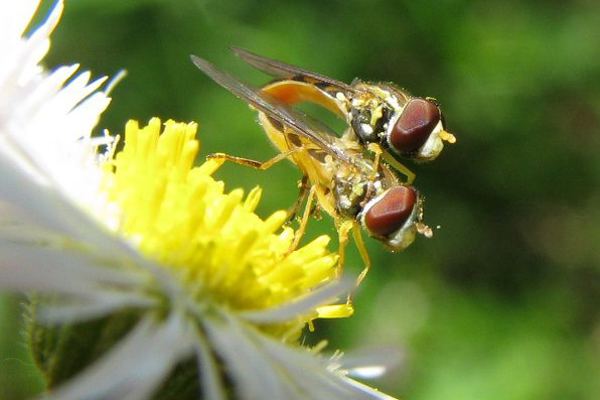
Why Do We Have Sex?

"Sex is hard to explain," writes Michael Brothurst in a recent article in the journal Science. Like others in his field, Brothurst, who studies the evolution of sexual reproduction at the University of Liverpool, doesn't "get" men.
"Since males can't reproduce by themselves and often contribute nothing except genes to their offspring, a population of asexual females can grow at double the rate of a population that reproduces sexually," he writes.
Why, then, do males exist at all? Why do most plants and animals have two sexes — that is, two sexes who have sex with each other — instead of just one?
The most likely explanation is known as the Red Queen hypothesis, named after the monarch in Lewis Carroll's "Through the Looking Glass." In that novella, Alice and the Red Queen hold a race in which they run in place but never get anywhere. Somewhat analogously, the Red Queen hypothesis holds that organisms and the parasites that live on them are running a race in which they constantly evolve in response to each other's genetic mutations, maintaining an overall balance. [Read: Sex Stats: Virgins On the Rise]
As parasites evolve to take advantage of the weaknesses of a typical host organism, Brothurst explains, host organisms with rare versions of genes, known as alleles, are less susceptible to the parasites, and so stand a better chance of surviving to their reproductive age; likewise, their offspring are endowed with these advantageous alleles. As a result, over generations these organisms' rare alleles become more common in the population, so parasites start evolving to take them on. At that point new unusual alleles begin to flourish among the hosts.
Sex, the theory holds, gives host organisms a leg-up on this evolutionary treadmill. "This continual selection for rarity favors sexual reproduction over asexual reproduction; sexual recombination allows hosts to reshuffle their pack of alleles and generate new, rare combinations in their offspring," Brothurst writes.
Evidence in favor of the Red Queen hypothesis comes from many walks of life. Among freshwater snails that can reproduce both sexually or asexually, more males (and thus more sexual reproduction) occur in shallow areas where the snails are more likely to get infected by flukes, a type of parasite. In Brothurst's words, "This suggests that infection promotes sex." [Read: Yes, Even Fish Get Lice]
Sign up for the Live Science daily newsletter now
Get the world’s most fascinating discoveries delivered straight to your inbox.
However, up until now, researchers didn't know for sure whether flukes (to use the previous example) are actually best adapted to their snail hosts. Maybe the two species haven't been coevolving at all, in which case the very foundations of the Red Queen hypothesis would crumble.
Levi Morran of Indiana University and his colleagues have given the Red Queen theory a new boost. In the lab, the researchers pitted roundworms against a species of bacteria that kills them, and observed what happened as the two coevolved. Turns out, roundworms that produced asexually were killed off in just 20 generations, while sexually reproducing worms were able to continually evolve to fend off their bacterial attackers.
In a race to stay in the same place, it seems that sex is key.
Follow Natalie Wolchover on Twitter @nattyover.Follow Life's Little Mysteries on Twitter @llmysteries, then join us onFaceboo
Natalie Wolchover was a staff writer for Live Science from 2010 to 2012 and is currently a senior physics writer and editor for Quanta Magazine. She holds a bachelor's degree in physics from Tufts University and has studied physics at the University of California, Berkeley. Along with the staff of Quanta, Wolchover won the 2022 Pulitzer Prize for explanatory writing for her work on the building of the James Webb Space Telescope. Her work has also appeared in the The Best American Science and Nature Writing and The Best Writing on Mathematics, Nature, The New Yorker and Popular Science. She was the 2016 winner of the Evert Clark/Seth Payne Award, an annual prize for young science journalists, as well as the winner of the 2017 Science Communication Award for the American Institute of Physics.










